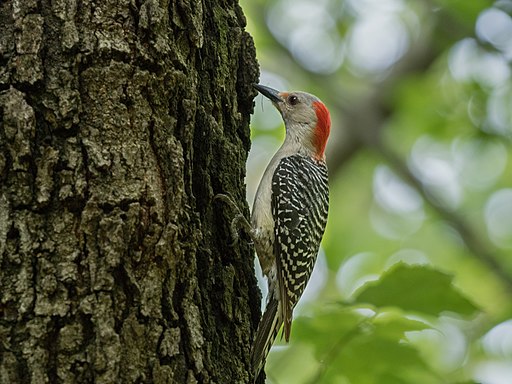Discover the Fascinating World of Woodpeckers: Whatever You Need to Know
The globe of woodpeckers is a world filled up with one-of-a-kind behaviors, intricate adaptations, and a diverse selection of types. From their environments and distribution patterns to their feeding practices and specialized anatomical functions, woodpeckers have actually long captivated the rate of interest of ornithologists and nature enthusiasts alike.
Woodpecker Habitats and Circulation
Woodpeckers occupy a varied series of settings worldwide, showcasing adaptability in their distribution patterns. These resistant birds are found in forests, timberlands, savannas, and deserts across numerous continents, demonstrating their capacity to thrive in different weather problems. In North America, for instance, woodpeckers can be identified in both coniferous and deciduous forests, utilizing their strong beaks to forage for bugs and create nesting cavities in trees. Likewise, in Africa, specific woodpecker varieties have actually adjusted to dry environments, such as the acacia timberlands, where they play a vital duty in controlling insect populaces.

Feeding Behaviors and Diet Plan
Amongst the various aspects of their behavior, woodpeckers show distinctive feeding habits and nutritional preferences. These birds are mainly insectivores, with a diet regimen that consists of ants, beetles, caterpillars, and other pests located in trees. Woodpeckers utilize their strong beaks to pierce right into the bark of trees, penetrating for insects and larvae concealed under the surface area. In addition to pests, woodpeckers additionally take in nuts, seeds, fruits, and sap. Some varieties have specialized tongues with barbed suggestions that assist them remove insects from gaps in wood.
Woodpeckers are recognized for their drumming behavior, which offers not just to interact with other woodpeckers yet also to locate food. The quick drumming noise is produced by the bird pecking on resonant surfaces like dead trees or metal posts. This behavior can draw in pests hidden in the wood, permitting the woodpecker to find their presence and feed upon them.
One-of-a-kind Adaptations for Tree Climbing
In their adept quest of bugs concealed within tree bark, woodpeckers have developed exceptional anatomical attributes that outfit them with one-of-a-kind adjustments for reliable tree climbing. Woodpeckers have strong neck muscular tissues and an unique head structure that absorb the impact of continuous pecking, allowing them to climb up up and down without causing damage to their brains. These adaptations showcase the amazing transformative design that allows woodpeckers to navigate trees with accuracy and performance.
Diverse Woodpecker Variety Worldwide
With over 200 various types spread across different environments worldwide, the household of Picidae incorporates a remarkable try this site diversity of woodpeckers. These birds can be found in woodlands, woodlands, savannas, and even metropolitan areas, showcasing their adaptability to different atmospheres. From the renowned Northern Flicker in The United States And Canada to the colorful and evasive Crimson-backed Flameback in Asia, each woodpecker species exhibits unique attributes in regards to tuft, behavior, and habitat preference.
Woodpeckers vary considerably in dimension, with the diminutive Downy Woodpecker determining around 6-7 inches in size, while the Full Article powerful Lineated Woodpecker can rise to 17 inches - Woodpeckers in Florida. Their beaks also are available in different sizes and shapes, reflecting their feeding behaviors. Some varieties specialize in removing insects from tree bark, like the Acorn Woodpecker, while others, such as the Black-cheeked Woodpecker, eat fruits and seeds

Preservation Efforts and Obstacles
Preservation initiatives for woodpecker populations are crucial in mitigating the impact of environment loss and other dangers facing these diverse bird species. Woodpeckers deal with various obstacles to their survival, mostly due to logging, urbanization, environment adjustment, and invasive types. To deal with these concerns, conservation initiatives concentrate on safeguarding and restoring woodpecker environments, carrying out sustainable forestry techniques, and elevating recognition concerning the relevance of these birds in ecological communities.
One significant challenge in woodpecker preservation is the fragmentation of their habitats, causing isolated populaces that are extra vulnerable to termination - Woodpeckers in Florida. Preservationists function to produce wild animals hallways and safeguarded areas that attach these fragmented environments, permitting woodpeckers to relocate in between various areas for feeding, reproducing, and shelter

Conclusion
In final thought, woodpeckers are fascinating birds with distinct adaptations for tree climbing and feeding habits. Additional research and conservation actions are needed to make sure the survival of woodpeckers in the wild.